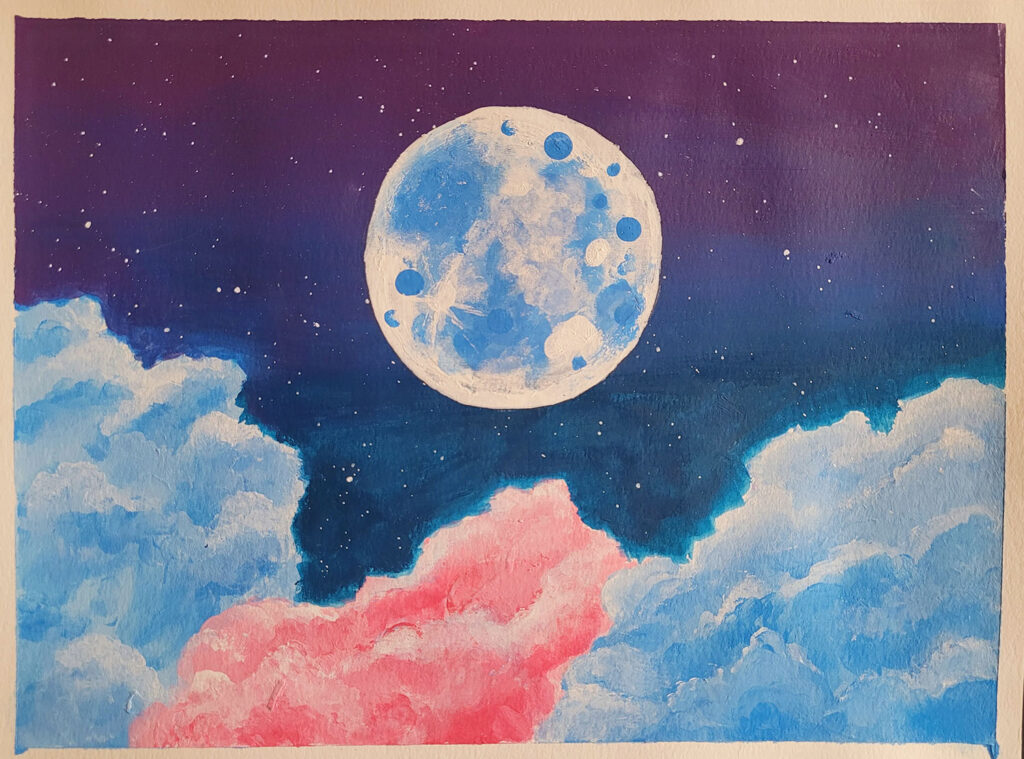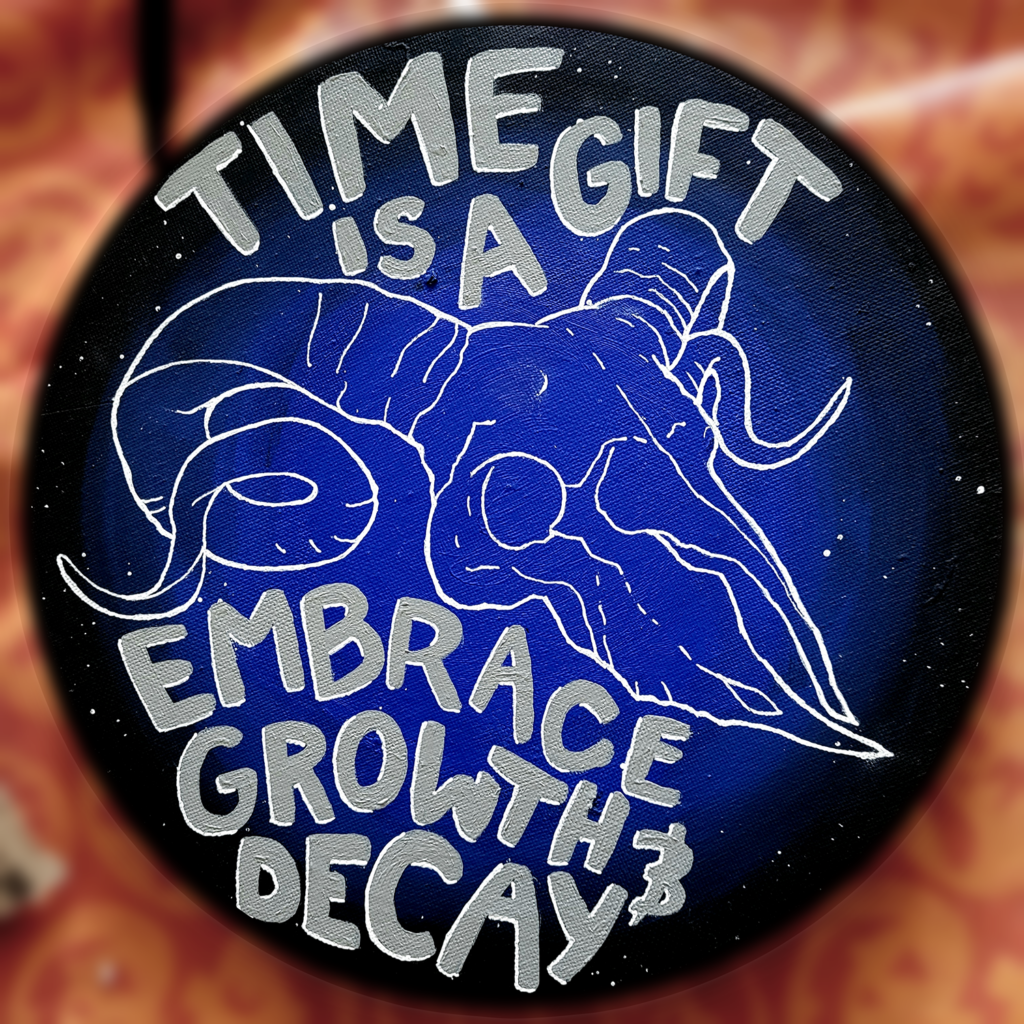Ross Gravance
![]() Where I live: in the U.S., Southern California.
Where I live: in the U.S., Southern California.
My education: I finished high school, and did two years of fine art courses at a small community college. I didn’t finish my degree because I had to get a job to support myself, and find an apartment with my partner.
Website | Instagram
What inspired you to start creating art that is tailored for those who feel out-of-the-ordinary or outcast?
I have always felt that I didn’t fit in. I know that sounds cliché, but really— it took me years to start making art seriously, and ever since I have, I’ve even felt like I couldn’t be an artist. I’m trying to take those two parts of myself and make them work together.
That’s why I create the way I do. I want my art to reach out to those who feel that no matter where they go, they’ll always somehow be apart from everyone else. I see so much beauty in strange and even mundane, simple things. I want that to come through in my art, even the most ordinary, or strange, or sad things can be so beautiful. I want them to see my art and feel called to, maybe even feel seen. I know, that’s a lot to ask from my little paintings! But that is ultimately my goal with my more “serious” paintings.
Can you describe your artistic style and how it has evolved over the years?
I think my style is still hard to define and tends to vary across media, but I would call it dream-like. It took a long time to get to this point where there is any consistency at all. I had a very awkward start, where I was learning both digital art and traditional art at the same time. After about 4 years I had a semi-recognizable drawing style, that I didn’t stick with. I eventually became decent at technical drawing; I loved typography, anything with ink and bold lines, and I started learning calligraphy.
After a few years of college drawing courses, and a Repetitive Strain Injury starting up, I had to switch gears again. I developed a way of painting that was finally more expressive and felt like an extension of me. I was forced to loosen up, plan less, and play more. This resulted in the somewhat whimsical style I have now.
“Blood Moon” has a very striking use of color and contrast. What was your thought process while creating this piece?
“Blood Moon” is a good example of how I take simple elements from the natural world, and put them together how my mind sees them. I was observing a blood moon for the first time in 2020, I even got pictures of it on my phone. Seeing all the photos of it on the news and social media inspired me to paint it. But I didnt want to just copy a photo… I wanted it to look a bit more unusual than it already was.
I thought, “Having the stars and clouds in the sky drab white and grey when the moon is RED… that moon is a bit garish, isn’t it? That doesn’t really work. It already looks like something out of a dream, a nightmare maybe.” I didn’t want to change the moon back to white, to make it more realistic; I wanted to change the rest of the scene along with it. I thought the stars needed some color variety to match the moonlight, and clouds should always be colorful, of course… I can’t stand to paint monochrome clouds. I always see cotton-candy clouds in my dreams. And so that was that!
How did your journey as an artist begin? Were there any significant milestones or turning points?
I was briefly educated in fine art, I did advanced art in high school and some in college. While I was also learning digital art, traditional drawing somehow felt easier. As I mentioned, I used to be more focused on drawing than painting; I loved doing studies from life, figure sketches, little comics, anything. For a few years I carried a sketchbook with me everywhere. I was very serious about practicing every day and pushed myself a lot for my college art. I started inking my sketches, learned calligraphy, and typography. I got better at digital art and design, still very technical and stiff-looking. I did some almost professional-level work. But, I didn’t realize how physically taxing this type of drawing was on me. I would never take breaks. I would sit down and do 2 or 3 pieces start-to-finish in one day, on top of my college work.
I didn’t submit any of those old pieces for this publication. I was decently skilled, but there was nothing really remarkable about my artistic style. At that point, you couldn’t look at many of my pieces and immediately recognize it as mine. I was more concerned with getting things absolutely perfect. I was always terrified of starting over, “wasting” time and materials. That hindered my growth as an artist in a big way.
I definitely took a hard turn towards painting more loose, less realistic subjects about 5 years ago when I developed the Repetitive strain injury in my dominant hand. It made drawing almost impossible for the better part of a year. It really forced me to loosen up! I found that painting was more relaxing mentally, and less of a strain on my wrist. I even started to use old, cheap powder paints and crayola markers to do ink-wash and watercolor paintings in an old book. Not a sketch book, a pulp hardcover book. The fear of wasting expensive materials was gently washed away by dirty brushes and diluted Crayola ink. I had already “ruined” the book once I painted on one page. After that, I could simply open it up and start painting whenever I felt like it.
That was when my art became a bit more expressive, colorful, and original. There is a focus on the night sky, clouds, plants, and very bright, irregular colors. To most people, my paintings are just a bit “off”— there is usually a recognizable subject, but I don’t use realistic color palettes, and nothing feels like a connected scene, just individual parts that could be related, almost like a collage— and I think my art has a dream-like quality to it. I know, that’s not a very original way to describe it. I think it reflects how I experience the world; I have a hard time seeing things as one big, cohesive picture. I see every individual thing as seperate, and look at little details first. That’s how a paintings come together for me now, fragmented but still whole.
Have there been any artists or movements that have particularly influenced your work?
It might be hard to believe, but I love the work of Warhol, Kehinde Wiley, and Bob Ross. Not very similar artists! I definitely got my love of irregular color palettes from Warhol’s pop-art, although it’s not something I try to emulate directly. Kehinde Wiley has been an inspiration for skill and cohesive visual style ever since I first learned about him in school. His naturalism, depth of color, and lush floral motifs are things that I always wonder, “What if I tried that? What if I could do something like that..” . Bob Ross is obvious; though I’ll never want to paint naturalistic landscapes that are quite so rich with detail, at some point I saw him painting clouds and I just went, “OH, like that,” after years of sketching and studying and struggling to get them really cloud-like.
How do you hope viewers will interpret and connect with your work?
I can only hope that the right audience will see it. Even among artists and art appreciators, only very few people really understand and/or enjoy the majority of my work. Only one person in the whole world does both. But I want to reach more of those people who don’t fit in, feeling like aliens walking around in disguise on a strange world. I hope they will see it and feel called to. If nothing else, know that I am here and I see the world differently, too. Know there IS beauty in the strange, the sad, the mundane— not despite those things. Know that means you, too.
What advice would you give to other artists who feel out-of-the-ordinary or struggle with being outcasts?
I can say that, eventually, if you are the type of artist who wants to: you WILL find your people. You will find someone in the world, even if it is just one single person, who really truly understands your art! They are going to love it, and cherish it, and no matter what your brain is telling you, no matter what criticisms or insecurities you feel about your work— you really must let them. Let them love and cherish and understand your artwork. It could help them to understand you. And it could help you to find a place or people where you really do fit in.



Leave a Reply